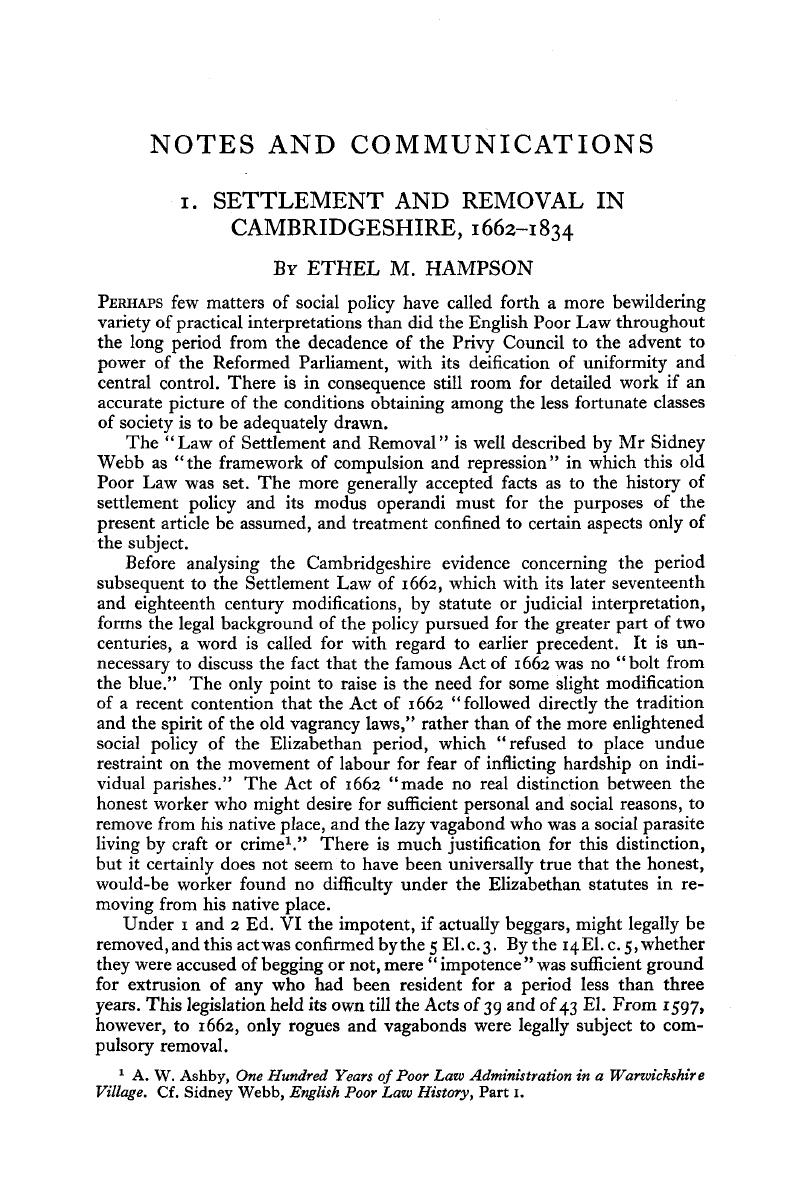Article contents
1. Settlement and Removal in Cambridgeshire, 1662–1834
Published online by Cambridge University Press: 20 December 2011
Abstract

- Type
- Other
- Information
- Copyright
- Copyright © Cambridge University Press 1928
References
page 273 note 1 A. W. Ashby, One Hundred Years of Poor Law Administration in a Warwickshire Village. Cf. Sidney Webb, English Poor Law History, Part 1.
page 274 note 1 The governing body of the town.
page 274 note 2 Michael Dalton, The Countrie Justice (1635 ed. B.M.).
page 275 note 1 From the accounts given by labourers of their own hirings, a ten-year-old boy could, in the middle of the eighteenth century, earn 50s. a year; a man-servant's wages varied from £2 or £3 to 13 or 14 guineas—according to his age and whether or not he had “also the run of a sheep,” etc.; women earned from £2 to about 5 guineas towards the end of the eighteenth century, and sometimes as much as £11 in the early nineteenth century.
page 276 note 1 The MS. Q.S.R. extant for this period cover the years 1660–70; 1689–94; 1699–1750; 1757–71; 1796–1830.
The volumes for 1757–71 are only rough minute books and do not give full details always.
The records for the years 1699–1750 were worked through in conjunction with Miss Marshall. In her calculations (English Poor in the Eighteenth Century) she counts presumably as new cases some which were the same cases “respited” from previous sessions. The total number of appeals which could not be settled at their first consideration was (in the whole period between 1660 and 1830) 321. Of these 288 were respited once, and the remainder 2, 3, 4, and even 5 times: 10 cases went up to the higher tribunal of the King's Bench.
page 276 note 2 E.g. round Whittlesford in 1783.
page 278 note 1 In cases where the final settlement was not in dispute, the justice, after cataloguing various services, frequently summarised the remainder: “has been in many and divers places since.”
page 283 note 1 J. O. Dunlop, Apprenticeship and Child Labour.
page 284 note 1 The Act of 1763 reduced the period to seven years' servitude, or till twenty-one years of age, for London apprentices, and the Act of 1778 made the reduction general for the whole country. Before these dates, however, the terms were not always according to law in Cambridgeshire.
page 285 note 1 The actual certificates preserved are more usually those given by other parishes—a list, or occasional memorandum, recording those given by the parish itself. The certificates given by St Mary's the Great to other parishes are only incompletely recorded. Memoranda and lists rarely give details as to the size of the family, etc.
page 286 note 1 Confirmatory evidence of this policy exists in the fairly frequent examples, to which reference was made above, of the separation of the eldest child from the rest of the family, owing to his bastard birth and consequent settlement in a different parish.
page 287 note 1 A. Redford, Labour Migration in England 1800 to 1850.
page 288 note 1 These figures may occasionally have included sundry minor sources of legal expenditure.
- 1
- Cited by


